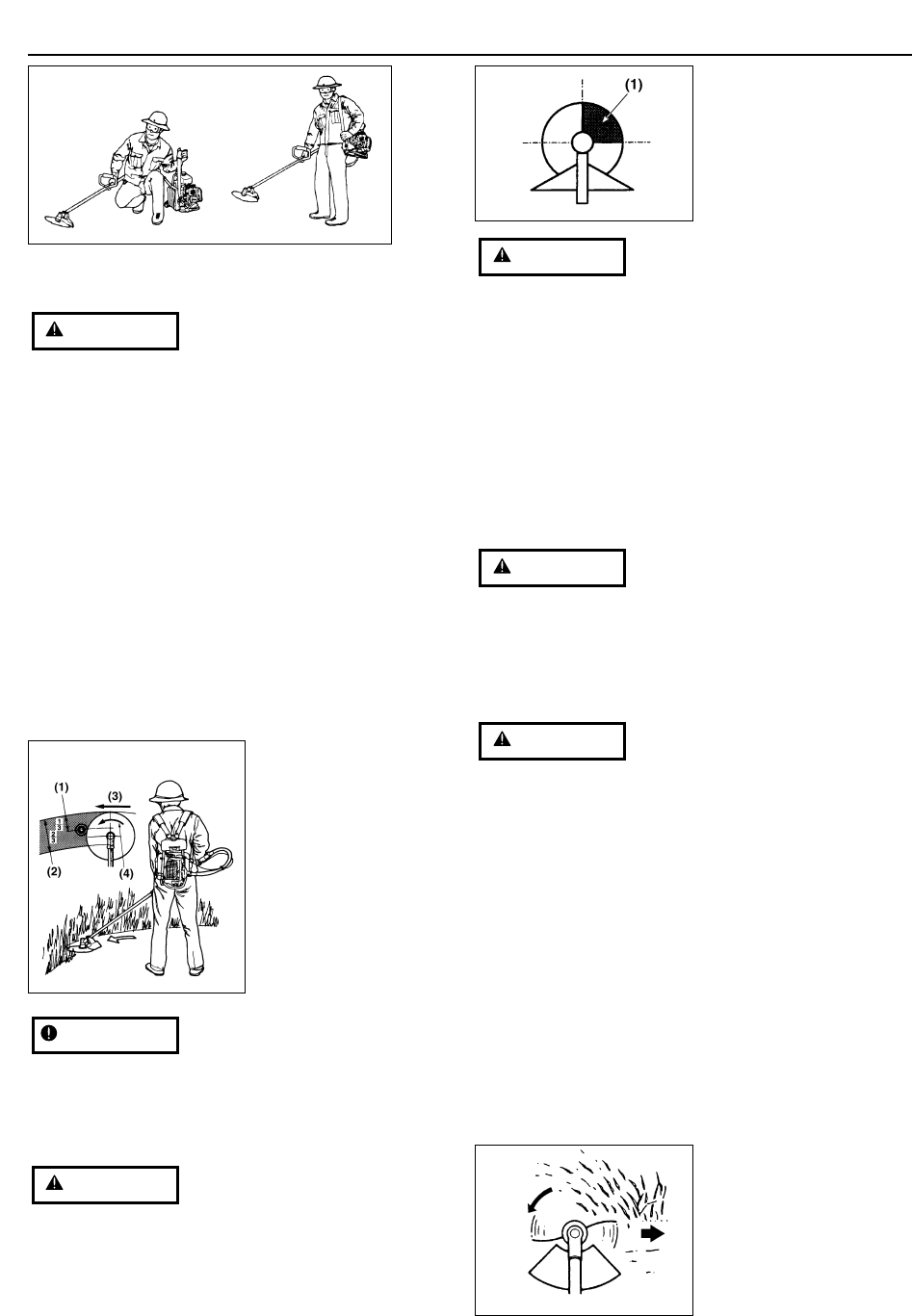
15
(1) Area of the blade
where the machine is
prone to blade thrust
• When using this machine, read and obey the
precautions and instructions described in “Safety
precautions” (pages 5 to 8) of this manual.
• Before shouldering the main body of the
brushcutter, return the throttle lever to the idling
position and make sure the blade has stopped
rotating.
• When shouldering the main body of the
brushcutter, be careful that the throttle wire does
not get tangled, and that the blade does not touch
the ground.
This product employs a plot type carburetor. If the
engine is tilted too much, the fuel in the breather or
carburetor of the fuel tank might leak out. Do not tilt
the engine upward or downward during cutting, or
when storing or transporting the brushcutter.
Be careful not to hit the blade against any object
during cutting. Hitting the blade against stones, etc.
might damage the blade and driving unit, or bend
the main pipe.
LINE HEAD USAGE
• Always remember that the TIP of the line does
cutting. You will achieve better results by not
crowding the line into the cutting area. Allow the unit
to trim at its own pace.
1. Hold the unit so the head is off the ground and is
tilted about 20 degrees toward the sweep direction.
2. Use full throttle when cutting.
3. You can avoid thrown debris by sweeping from your
left to the right.
WARNING
WARNING
WARNING
■ CUTTING OPERATION
•Always wear eye protection such as safety
goggles. Never lean over the rotating cutting
head. Rocks or other debris could be thrown into
eyes and face and cause serious personal injury.
• Keep the debris guard attached in place at all
times when the unit is operated.
BLADE USAGE (OP7)
1. Always cut by guiding the head from your right to left.
2. A metal blade cut best up to the point 1/3 from the
edge. Use that area for cutting shrubs, tough and
thick weeds. For cutting young grass, you can use up
to 2/3 from the tip of blade.
3. Adjust the engine speed according to the cutting
objects. Cut the young grass at middle speed, and
cut shrubs or tough and thick weeds at high speed.
(1) For branches and
trees
(2) For grass and weeds
(3) Direction of cutting
(4) Direction of rotation
Operating at low speed makes it easier for grass,
weeds, or twigs to become caught up in the blades, and
also it makes the shaft and clutch wear down more
quickly.
When using a metal blade, do not cut grass with the
right half of the blade. Otherwise, the machine might
blade thrust, causing a serious injury.
WARNING
IMPORTANT
WARNING
OP8
7. Operation
OP7
OP6
OP9


















